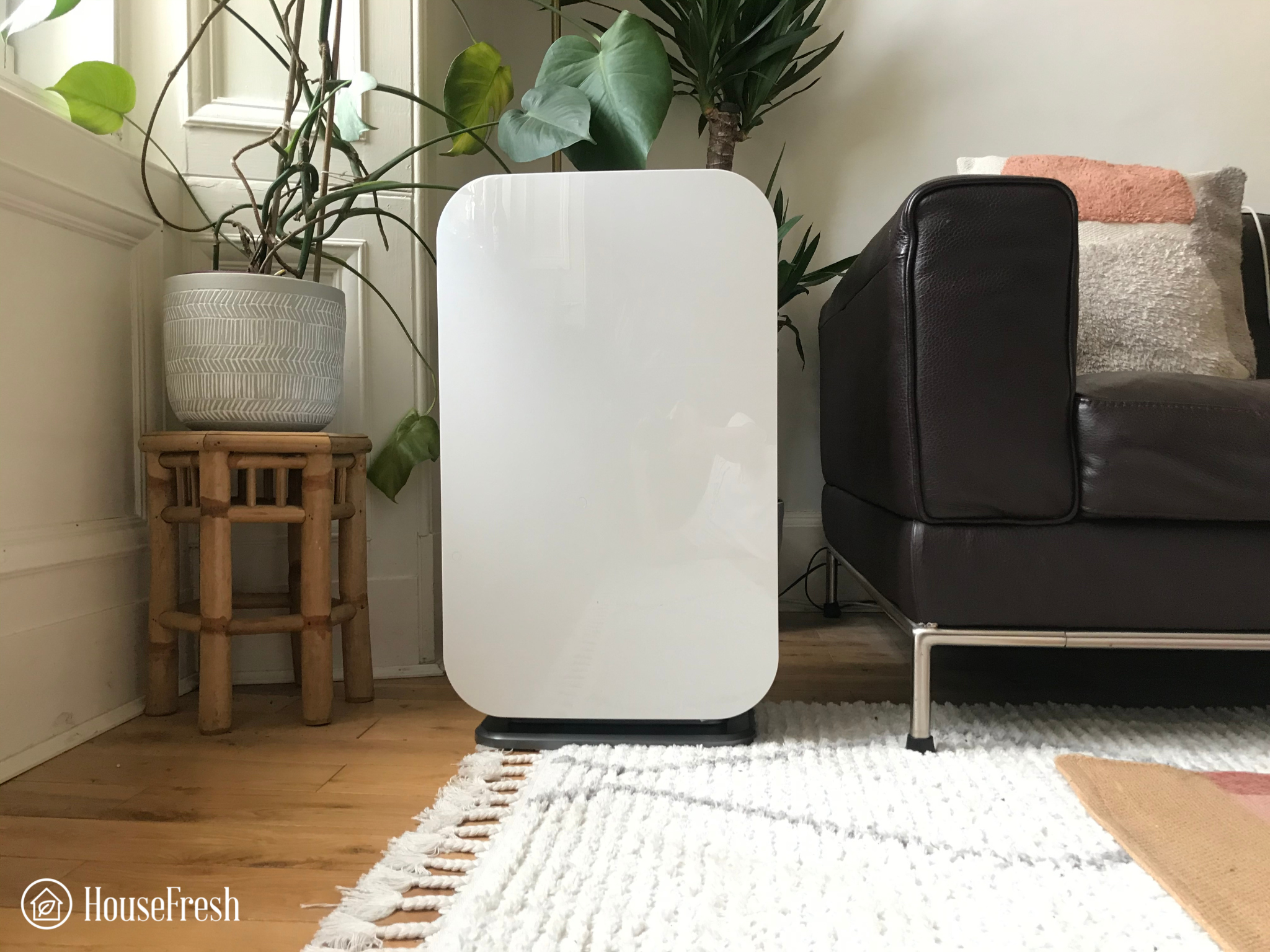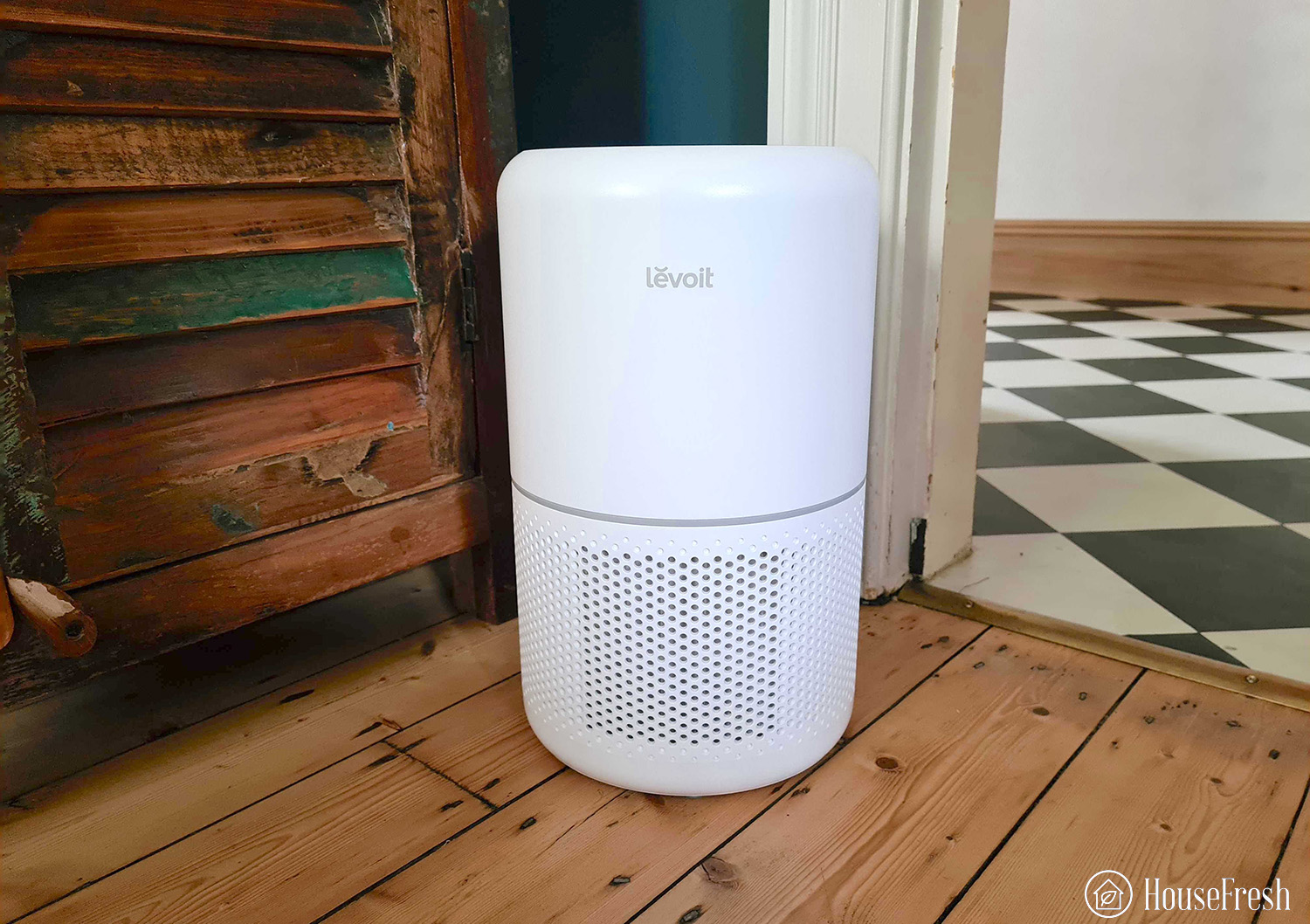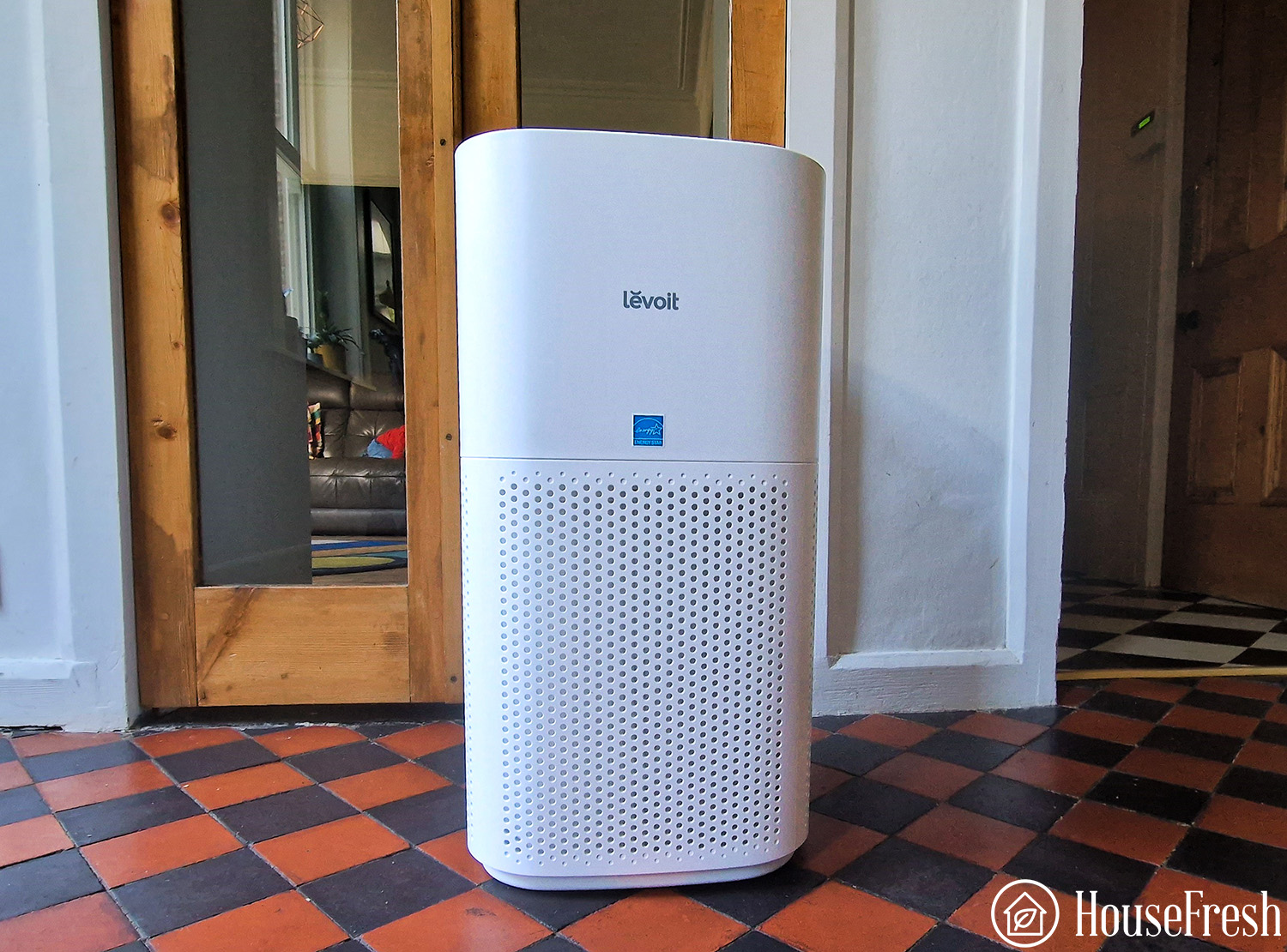Here are five things you should do regularly to remove dog smells throughout your home.
1. Use enzymatic cleaners
You can use these on upholstery, carpets and fabrics and clothing. The enzymes break down the molecules that create odors and can eradicate dog smells without leaving harsh chemicals or fragrances behind, making them safe to use around both pets and children.
The cleaners come in both spray and liquid forms and you can buy them at most major stores.
Step 1: Spray or pour the liquid cleaner onto the affected area
Step 2: Let it sit for a few minutes
Step 3: Wipe the area clean with a damp cloth
2. Vacuum with a HEPA device
While your dog may not be too keen on the sight and sound of the vacuum cleaner, it’s essential to hoover carpets and rugs frequently. Devices that use a HEPA (High-Efficiency Particulate Air) filter are the most effective for eliminating odors. This is because they capture dog fur, dander and odor particles rather than recirculate them back into the air like regular vacuums.
Alongside rugs and carpets, don’t neglect other areas in your home, such as curtains and furniture. Anything that can be vacuumed should be.
3. Sweep and mop floors
If you have wood, laminate or tile floors, give them a good sweep to remove dirt and dust and then get to work with your mop. But before you reach for the store-bought floor cleaner, consider using vinegar instead. Due to its high acidic content, vinegar is excellent for breaking down and neutralizing odor particles, thus obliterating dog smells.
Step 1: Mix ½ cup of vinegar with 1 gallon of warm water for the solution
Step 2: After each dip in the bucket, ring out the mop thoroughly and let the floors air dry when finished
4. Freshen up with baking soda
The various chemicals within the soda neutralize and absorb other smells. Unlike vinegar, which has its own pungent smell, baking soda is odorless.
Step 1: Sprinkle baking soda onto your carpets
Step 2: Let it sit for a few minutes
Step 3: Vacuum it up
💡 You can also pour baking soda into shallow bowls and place these around areas of your home.
5. Wash your dog’s bedding and toys
A dog’s bed is often a significant odor source due to all that fur, dander and saliva. And when their saliva gets all over their toys, the odor can permeate your home.
Step 1: Shake out the bedding to remove as many hairs as possible
Step 2: Place both the bedding and toys in the wash — you can add half a cup of white vinegar to your usual detergent to eliminate smells
Step 3: Hang the bedding to dry
Why does my house smell of dog? (and how to prevent it)
Now, let’s look at the potential causes of that dog smell and how you can fix each one.
Odor Cause 1: Poor hygiene
If your dog gets wet from the rain or has rolled about in muddy patches and puddles, this can lead to a very pungent “wet dog smell.” When your dog’s coat gets wet, microorganisms in dog hair effectively break free as the water evaporates. Waste products in the dog’s skin, like bacteria and yeast, fill your home with odors.
Equally, some dogs’ fur can become matted with dirt and bacteria, causing unpleasant smells.
Step 1: Gently coax or place your dog carefully in the tub (you might need a treat to encourage them)
Step 2: Dilute the special dog shampoo by adding some to a bowl full of water
Step 3: Check the water is warm, then wet your dog
Step 4: Shampoo your dog twice. The first time removes dirt and the second means you can properly wash their skin
Step 5: Ensure you clean areas like the pads of their feet, armpits and stomachs
Step 6: Next, use the dog conditioner. Be sure to leave it on for a few minutes before rinsing away
Step 7: Give your dog another rinse to ensure no soap is left on their fur
Step 8: Dry them thoroughly with a towel and blower
Odor Cause 2: Skin infections
If you notice that your hand smells after stroking the dog, their skin could be to blame. Microbes, including bacteria and yeast, cover the skin and injury or disease can affect the skin’s natural barrier, leading to smelly infections. Skin infections can also result from poor hygiene, so bathing regularly, as described above, will help.
Chafing is another cause of odors and often affects parts of the dog where there’s enfolded skin. For example, skin folds on their face, particularly the ears and body, such as the feet, anus and vulva.
Be sure to check, clean and dry these areas regularly and notice if the skin looks inflamed or sore. You might need to visit the vet if you spot blemishes or if your dog’s skin is itchy and uncomfortable.
Odor Cause 3: Ear infections
Dog ears are often warm, moist environments, yet certain breeds may be more prone to problems. For example, Springer Spaniels and Basset Hounds have notably hairy and floppy ears. This could make them more susceptible to ear infections, commonly caused by increased bacteria and yeast.
Similarly, if your dog has allergies or experiences hormonal imbalances, this can create a bacterial surge, leading to a toxic smell.
If you suspect your dog might have an ear infection, be sure to visit your vet.
❌ Do not attempt to put anything inside the ear; this can be dangerous if the eardrum is damaged.
Odor Cause 4: Bad breath
Poor dental health is often the cause of bad breath, particularly the build-up of tartar and plaque. All mouths contain bacteria, but when plaque and tartar form on the teeth, the bacteria rise. Dental infections can then occur, which results in a putrid smell. Hair and food can also get caught in the tartar and inflamed gums, exacerbating the stench.
An underlying condition or disease can sometimes cause strong doggy breath, so visit your vet if you’re worried.
Brushing your dog’s teeth is the best way to prevent plaque formation. Use suitable canine toothpaste, and toothbrushes and brush daily (or at least weekly).
Odor Cause 5: Flatulence and poor diet
As much as we love them, dogs can be pretty disgusting regarding some of the things they consume. They can also eat very quickly, which may trigger digestive issues. Usually, however, if they ingest rotten food, any flatulence (aka farting) will be temporary. But the odor can still be a real problem.
Avoid letting your dog scavenge and feed them a plain, easily digestible diet to ease flatulence. If it continues, visit your vet if they have an underlying condition affecting their digestion.
Encourage your dog to eat more slowly using a food mat or dispensing toy.
Odor Cause 6: Anal glands
The anal glands are a natural part of your dog’s anatomy and are two tiny sacs on both sides of the rectum. They fill with pheromones to mark your dog’s territory and then empty again when the dog passes feces. However, they can become impacted and infected if they don’t empty.
It’s not just a terrible smell you’ll notice because the dog will probably also be very uncomfortable, dragging their bottom on the floor and scratching and licking their anus.
Visit your vet as soon as possible, as they can empty the anal glands. A higher fiber diet or fiber supplement can also help prevent this problem in the long term.
Can air purifiers ged rid of dog odors?
In a word: Yes.
The best air purifiers can sanitize the air inside your home while eliminating odors like dog smells. However, choosing a device with both a HEPA filter (just like with a vacuum) and an activated carbon filter is essential.
The HEPA can capture and trap tiny, airborne particles like pet dander, while the activated carbon (sometimes called charcoal) removes smells. The latter uses adsorption, meaning that odor particles stick to the carbon. Note that the more activated carbon a filter contains, the better it will be at removing odors.
The top 3 air purifiers for dog smells
We’ve tested many air purifiers at HouseFresh. We have our own testing room, which we fill with incense smoke and track how fast and effectively the purifier cleans the air.
Here’s our pick of the best air purifiers for dog smells.
| 🛋️ FOR LARGE SPACES | 💰 FOR TIGHT BUDGETS | 👑 BEST OVERALL | |
|---|---|---|---|
| Alen BreatheSmart 45i | Levoit Core 300S | Levoit Core 600S | |
 |  |  | |
| AIR CLEANING SPEED ⚡ | 33 minutes | 40 minutes | 15 minutes |
| CADR 👩🔬 | 245 CFM | 141 CFM | 410 CFM |
| FILTER TECHNOLOGY 💨 | True HEPA H13 filters with activated carbon pellets | H13 True HEPA filter with Activated Carbon | H13 True HEPA filter with Activated Carbon |
| MAX ROOM SIZE 📏 | Up to 800 sq. ft. | Up to 219 sq. ft. | Up to 635 sq. ft. |
| WEIGHT ⚖️ | 20.1 lbs (9.1 kg) | 5.95 lbs (2.7 kg) | 13.7 lbs (6.2 kg) |
| PROS 👍 | There are four different filters to choose from including OdorPlus. | Can be placed on a countertop and out of the way of dogs. | Uses AIRSIGHT™ Plus technology to detect contaminants in real-time |
| CONS 👎 | It uses a lot of power when running at its max speed. | It won’t be as effective in larger rooms. | The Levoit smartphone app could be improved. |
| OUR REVIEW 🔍 | Alen BreatheSmart 45i review | Levoit Core 300S review | Levoit Core 600S review |
| PRICE 💵 | $428.00 | $149.99 | $299.99 |
Last update on 2025-07-01 / Affiliate links / Images from Amazon Product Advertising API
Final thoughts
It’s important to know what might be causing dog smells, and sometimes there can be a serious cause. Generally, however, simple things like regular bathing and teeth brushing can solve the problem.
If dog smells are a particular issue in your house, you can do many things to eliminate the odor. On top of methods such as vacuuming and utilizing vinegar and baking soda, an air purifier is one of the most effective ways to eliminate smells.
SOURCES
- Ashton, D. (2023). 7 Best Air Purifiers for Pet Odor. housefresh.com
- Booth, J. (2023). How to Get Rid of Pet Dander. housefresh.com
- Devlin, J. (2022). Why Your Dog Smells So Bad and What to Do About It. akcpetinsurance.com
- Holiday Barn. (2018). What’s that Smell? 8 Reasons Why Your Dog Might Smell Bad. holidaybarn.com
- Home Made Simple. (2023). 14 Ways To Get Rid Of The Dog Smell In Your House Once And For All. homemadesimple.com
- Make It Clean. Enzyme Cleaner – The Definitive Guide to Enzyme Cleaning Products. makeitclean.com
- Mendoza, J., Kearl, M. (2022). Popular Science. How we vanquished the strong pet odors in our new home. popsci.com
- Merry Maids. (2022). Floor Cleaning with Household Vinegar. merrymaids.com
- Shein, N. (2022). Bob Vila. How to Make Your House Smell Like You Don’t Have Pets. bobvila.com
- Shuggs, R. (2022). Pet MD. Bad Breath in Dogs: Causes and Treatment. petmd.com
- Stathis, J (2022). How to Get Rid of Dog Smell from Anywhere in Your House. rd.com
- Tranter, S. (2020). Why does my dog smell? vethelpdirect.com
- Traverse, T. (2020). A Pro Groomer’s Top Tips on How to Properly Bathe a Dog. dailypaws.com





